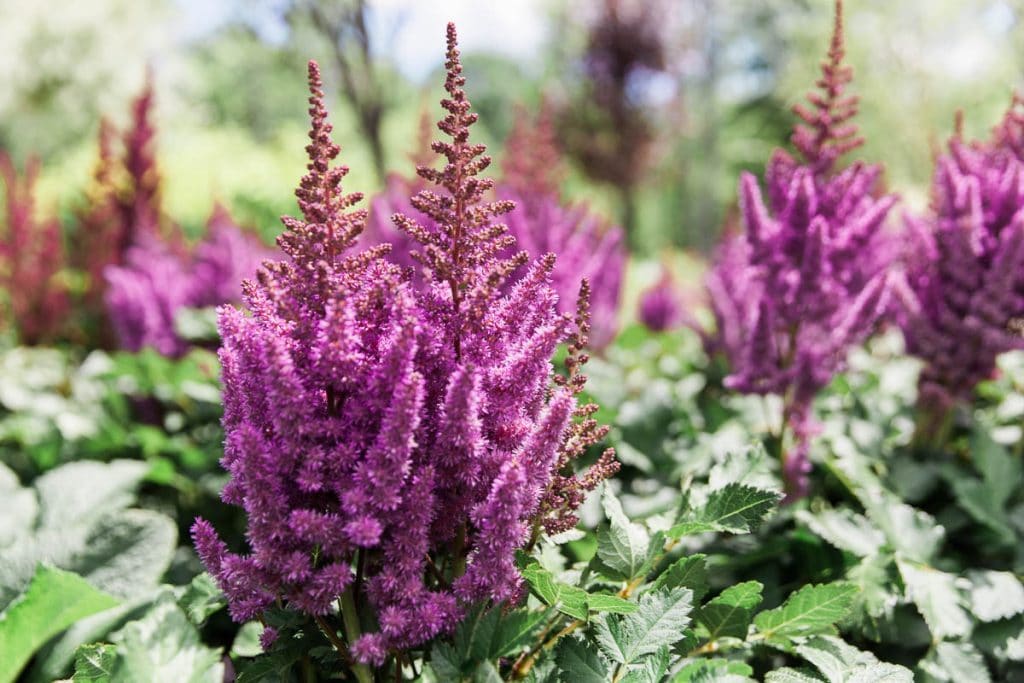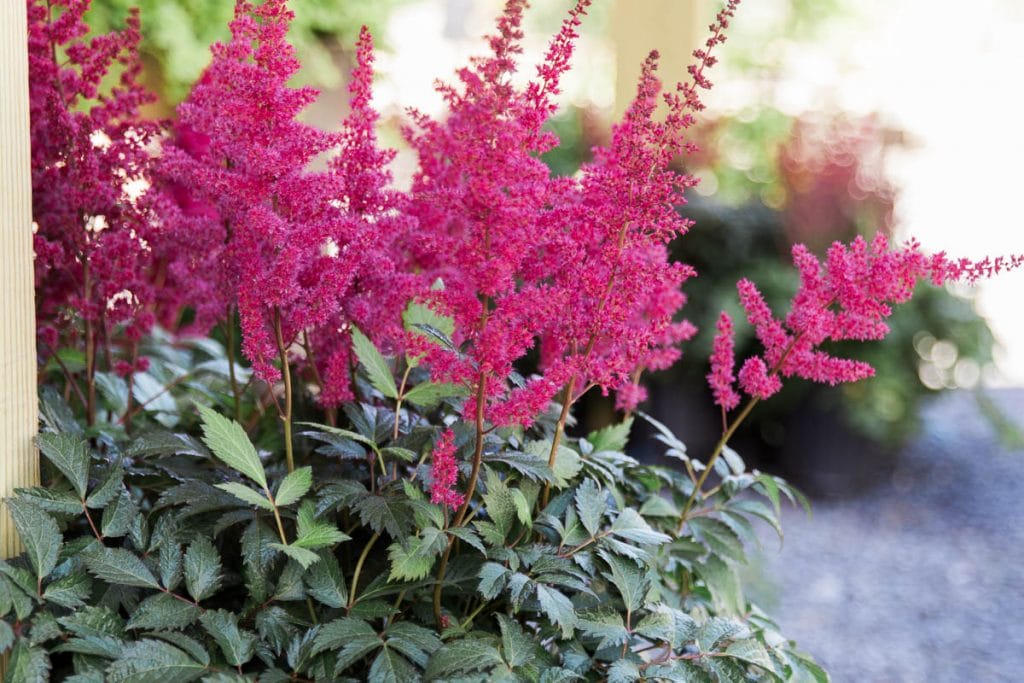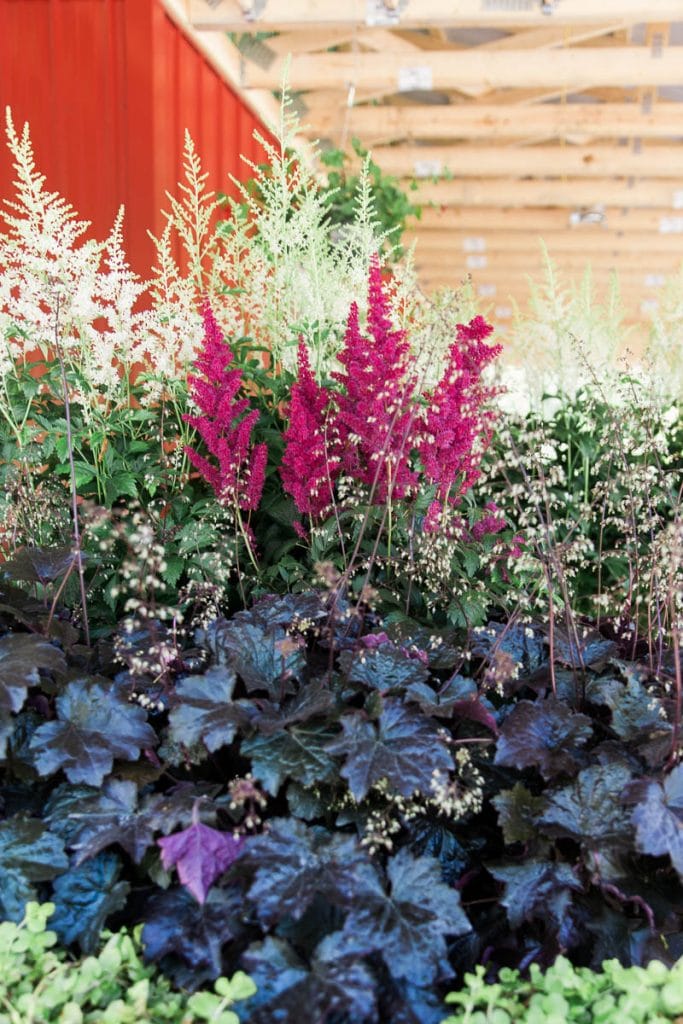
Other Names: False Goat’s Beard, False Spirea
Common Varieties: Astilbe ‘Fanal’ (dark red flowers); ‘Visions’ (red pink), ‘Bridal Veil’ (white).
Hardiness Zones: Typically zones 4-8, but some varieties are hardy in zones 3-9.
If you’ve ever researched shade gardens, you’ve probably come across astilbe! These perennials are renowned for their love of the shade and damp earth. Astilbe are herbaceous (no woody growth) perennials with feathery, brightly colored flowers and fern-like foliage. They grow upright and while some varieties can reach up to 5′ in height (wow!), but astilbe x arendsii, the most common variety that’s hardy in New York, grows about 18″ to 3′. Astilbe blooms from late spring into summer, and their flowers vary from delicate white, to cool pink, to rich red.
Like their close relatives, coralbells (Heuchera), astilbe thrive in partial sun to full shade. They’re tolerant of moist soils and even clay soils, though they will tend to flower less in these conditions. To get the most from these colorful perennials, allow them morning sun and afternoon shade in a spot with moist but well-draining soil. They’ll offer a bright pop of color in shady corners of the yard.

Planting and Caring for Astilbe
Partial sun and well-drained soil are key for getting your astilbe to thrive and most importantly, bloom. However, they will tolerate deep shade and wet spots, if all you’re looking for is their interesting foliage.
When planting, here are a few tips to help you get your astilbe off to a great start. First, amend the soil in the area with sand and peat moss to ensure good drainage and extra nutrients. Plant them in a hole about twice the size of their root ball, about 4″-6″ deep. Make sure their root crown is about 1″ – 2″ below the soil. These perennials do best when planted in late spring.
Once they’ve taken, astilbe are fairly low maintenance. They grow at a moderate pace, only requiring dividing ever 3-4 years. Once their blooms are spent, feel free to cut them out – though dead heading won’t encourage any new growth. In the later fall, you can cut them back as you please and new growth will emerge next spring.
Special Features
Shade tolerant; wet area planting; deer-resistant; pollinator friendly (attracts butterflies!); some varieties are fragrant; long bloom period; fall interest. They also make great cut flowers!

Designing with Astilbe in your Garden
Astilbe is a perfect pair with virtually any other shade plant, so use it to add some pops of color in the darker spots in your yard. Go classic and plant it with hosta and heuchera for a bed of shade-loving flowers, or make it star of the show in a planting with ferns. It’s also the perfect perennial to fill in around your rhododendrons and azaleas, offering color after those blooms are haded.




